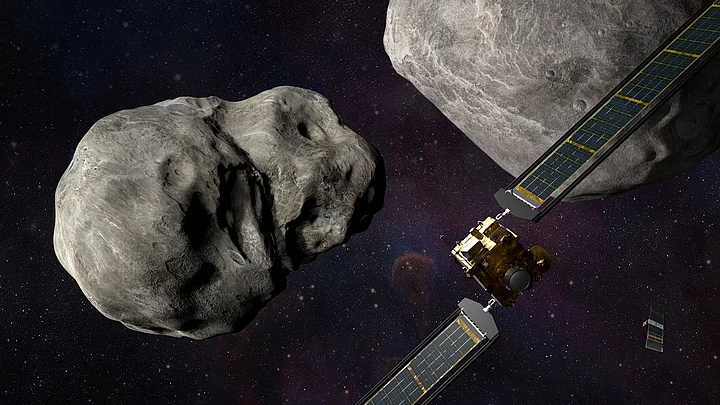After spending 10 months in space, NASA’s Double Asteroid Redirection Test (DART) successfully slammed into an asteroid on Monday, 26 September, in an attempt to alter the latter's course.
It was the world’s first demonstration of planetary defense technology, which will hopefully let us deflect any large asteroids that are headed for Earth in the future.
"We're embarking on a new era, an era in which we potentially have the capability to protect ourselves from something like a dangerous hazardous asteroid impact," said Lori Glaze, director of NASA's planetary science division.
“At its core, DART represents an unprecedented success for planetary defense, but it is also a mission of unity with a real benefit for all humanity,” said NASA Administrator Bill Nelson.
“As NASA studies the cosmos and our home planet, we’re also working to protect that home, and this international collaboration turned science fiction into science fact, demonstrating one way to protect Earth,” he added.
Kinetic Impact
DART targeted asteroid moonlet Dimorphos, a small body just 160 metres in diameter, which orbits a 780-metre-wide asteroid called Didymos.
While these asteroids are relatively close to the Earth (11 million kilometres), neither pose any risk of crashing into it.
The mission’s success demonstrated that NASA can successfully navigate a spacecraft to intentionally collide with an asteroid with the aim of deflecting it, a technique known as kinetic impact.
The investigation team will now observe Dimorphos from Earth using telescopes to confirm whether the collision did manage to alter the asteroid’s orbit around Didymos. Researchers estimate the orbit to have been shortened by about one percent or roughly 10 minutes.
Fifteen days before impact, a satellite called the Light Italian CubeSat for Imaging of Asteroids (LICIACube) deployed from the spacecraft to capture images of DART’s impact from a safe distance. It will send the images back to Earth within the next few weeks.
“DART’s success provides a significant addition to the essential toolbox we must have to protect Earth from a devastating impact by an asteroid,” said Lindley Johnson, NASA’s planetary defense officer.
“This demonstrates we are no longer powerless to prevent this type of natural disaster. Coupled with enhanced capabilities to accelerate finding the remaining hazardous asteroid population by our next Planetary Defense mission, the Near-Earth Object (NEO) Surveyor, a DART successor could provide what we need to save the day," she added.
